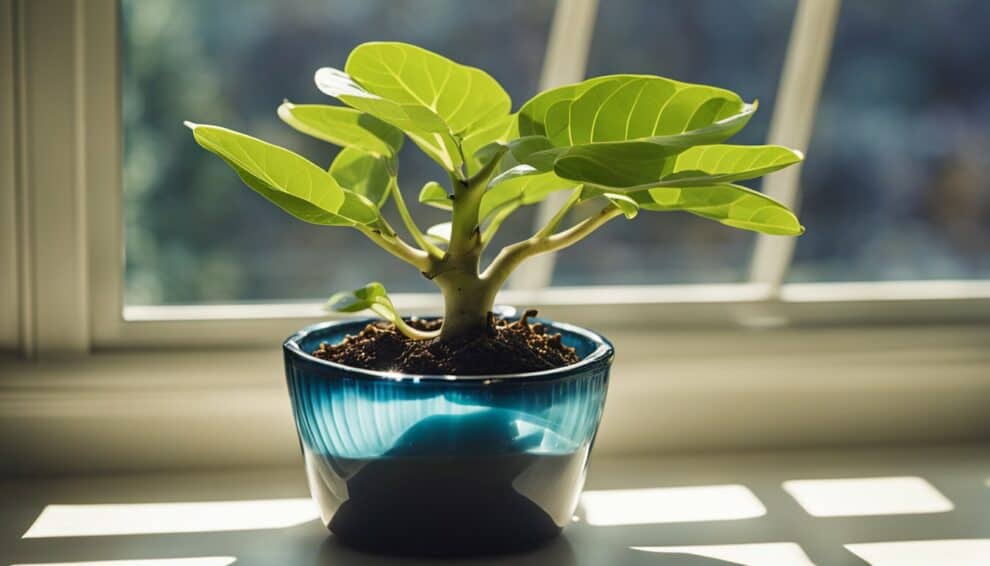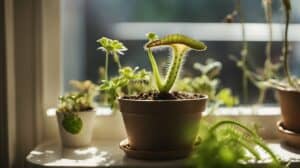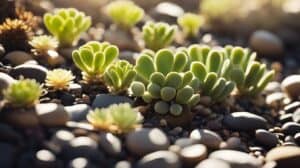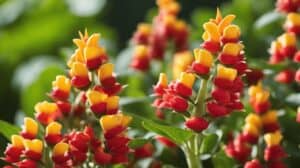Fiddle Leaf Fig Propagation 101: Growing New Trees from Cuttings

Fiddle Leaf Figs have become a popular houseplant in recent years due to their striking appearance and ability to add a touch of nature to any room.
However, purchasing a mature Fiddle Leaf Fig can be expensive, and many plant enthusiasts are turning to propagation as a way to grow new trees from cuttings.
Propagation is the process of growing new plants from existing ones, and it can be a fun and rewarding way to expand your plant collection.
With the right tools and techniques, propagating Fiddle Leaf Figs can be a simple and cost-effective way to fill your home with these beautiful plants.
In this article, we will explore the basics of Fiddle Leaf Fig propagation and provide step-by-step instructions on how to grow new trees from cuttings.
Understanding Fiddle Leaf Fig Propagation
The Biology of Fiddle Leaf Figs
Fiddle Leaf Figs, scientifically known as Ficus lyrata, are native to tropical regions of West Africa.
These plants are known for their large, violin-shaped leaves that can grow up to 18 inches long and 12 inches wide.
They are popular houseplants due to their attractive appearance and ability to purify the air.
Fiddle Leaf Figs can be propagated through stem cuttings, which involves taking a part of the stem and rooting it in soil or water.
The stem cutting should be taken from a healthy, mature plant and should be at least 6 inches long with a few leaves attached.
Benefits of Propagation
Propagating a Fiddle Leaf Fig can be a fun and rewarding experience. It allows you to create new plants from an existing one and expand your collection.
Additionally, propagating can help rejuvenate an older plant that may be struggling or has become too tall and leggy.
Propagation also allows you to share your love for Fiddle Leaf Figs with others by gifting them a new plant.
It is a great way to spread the joy of plant parenthood and connect with other plant enthusiasts.
In summary, understanding the biology of Fiddle Leaf Figs and the benefits of propagation can help you successfully grow new trees from cuttings and expand your plant collection.
Preparing for Propagation

Choosing the Right Cutting
Before starting the propagation process, it is important to choose the right cutting.
The ideal cutting should be at least 6 inches long and have a few leaves attached to it.
It is best to choose a stem that is healthy and free from any signs of disease or pests.
A stem that is too thin or weak may not be able to support the growth of new roots.
Tools and Materials Needed
To successfully propagate a fiddle leaf fig tree, you will need a few tools and materials. Here is a list of what you will need:
- Pruning shears or a sharp knife: To make a clean cut on the stem.
- Rooting hormone: To encourage the growth of new roots.
- Soil: To plant the cutting in and provide nutrients for growth.
- A pot or container: To hold the soil and cutting.
- Plastic wrap or a plastic bag: To create a humid environment for the cutting to root.
It is important to have all of these materials ready before starting the propagation process.
This will ensure that everything runs smoothly and the cutting has the best chance of success.
The Propagation Process

Making the Cut
Before starting the propagation process, it’s important to choose a healthy fiddle leaf fig tree to take cuttings from.
Once you’ve found your tree, select a branch that’s at least 6 inches long and has a few leaves on it.
Use a sharp, sterilized knife to make a clean cut at a 45-degree angle, just below a node.
Make sure the cutting has at least one node, which is where new roots will form.
Rooting Techniques
After taking the cutting, it’s time to root it.
There are a few different techniques you can use to root your fiddle leaf fig cutting, including using water, soil, or a rooting hormone.
If using water, place the cutting in a jar or vase filled with water, making sure the bottom of the stem is submerged.
Change the water every few days to prevent bacteria growth.
If using soil, plant the cutting in a pot filled with well-draining soil, making sure to keep the soil moist but not waterlogged.
If using a rooting hormone, dip the cut end of the stem into the hormone powder before planting in soil.
Planting the Rooted Cutting
Once the cutting has developed roots, it’s time to plant it in a pot. Choose a pot that’s at least 6 inches in diameter and has drainage holes.
Fill the pot with well-draining soil and plant the cutting, making sure the soil is firmly packed around the stem.
Water the cutting thoroughly and place it in a bright, indirect light location.
Keep the soil moist but not waterlogged, and avoid exposing the cutting to direct sunlight or cold drafts.
By following these simple steps, you can successfully propagate your fiddle leaf fig tree and grow new trees from cuttings.
With a little patience and care, you’ll soon have a collection of beautiful fiddle leaf figs to enjoy in your home.
Aftercare and Troubleshooting

Caring for New Plants
Once your fiddle leaf fig cuttings have rooted and grown into new plants, it’s important to provide them with proper care to ensure they continue to thrive.
Here are some tips for caring for new fiddle leaf fig plants:
- Light: Fiddle leaf figs thrive in bright, indirect light.
Place your new plants near a window with filtered light or use a grow light to supplement natural light.
- Watering: Water your new plants when the top inch of soil feels dry to the touch. Avoid overwatering, as this can lead to root rot.
- Humidity: Fiddle leaf figs prefer a humid environment.
You can increase humidity by placing a humidifier near your plants or misting them regularly.
- Fertilizer: Fertilize your new plants regularly with a balanced, water-soluble fertilizer to promote healthy growth.
Common Issues and Solutions
Despite your best efforts to care for your new fiddle leaf fig plants, issues may arise. Here are some common problems and solutions:
- Yellowing leaves: Yellowing leaves may indicate overwatering, underwatering, or lack of light.
Adjust watering and lighting accordingly.
- Brown spots: Brown spots may indicate fungal or bacterial leaf spot. Remove affected leaves and treat with a fungicide.
- Dropping leaves: Dropping leaves may indicate stress, such as from sudden changes in light or temperature.
Gradually acclimate your plants to new conditions to prevent stress.
- Pests: Common pests that may affect fiddle leaf figs include spider mites and mealybugs. Treat with insecticidal soap or neem oil.
By following these tips and troubleshooting common issues, you can successfully propagate and care for new fiddle leaf fig plants.
Frequently Asked Questions

What is the best method to propagate a fiddle leaf fig tree from a cutting?
The best method to propagate a fiddle leaf fig tree from a cutting is to use a stem cutting that is at least 6 inches long and has at least two healthy leaves.
The cutting should be taken from the top of the plant, just below a node, and should be allowed to dry for a few hours before being placed in water or soil.
Can you successfully propagate a fiddle leaf fig using just a single leaf?
No, it is not possible to successfully propagate a fiddle leaf fig using just a single leaf.
A stem cutting with at least two healthy leaves is required for successful propagation.
What are the steps for propagating a fiddle leaf fig in soil?
To propagate a fiddle leaf fig in soil, follow these steps:
- Take a stem cutting that is at least 6 inches long and has at least two healthy leaves.
- Allow the cutting to dry for a few hours.
- Dip the end of the cutting in rooting hormone.
- Plant the cutting in a pot with well-draining soil.
- Water the cutting and place it in a warm, bright location.
- Keep the soil moist and wait for new growth to appear.
At what point on the plant should you make a cut for successful propagation?
The best place to make a cut for successful propagation is just below a node on the stem. This is where the plant is most likely to produce new growth.
What common issues might I encounter while propagating a fiddle leaf fig?
Some common issues that you might encounter while propagating a fiddle leaf fig include:
- Root rot from overwatering
- Mold or fungus from too much moisture
- Failure to root due to lack of rooting hormone or improper cutting technique
How much time does it typically take for a fiddle leaf fig cutting to grow new roots?
It typically takes 4-6 weeks for a fiddle leaf fig cutting to grow new roots.
However, this can vary depending on the temperature and humidity of the environment, as well as the health of the cutting.













